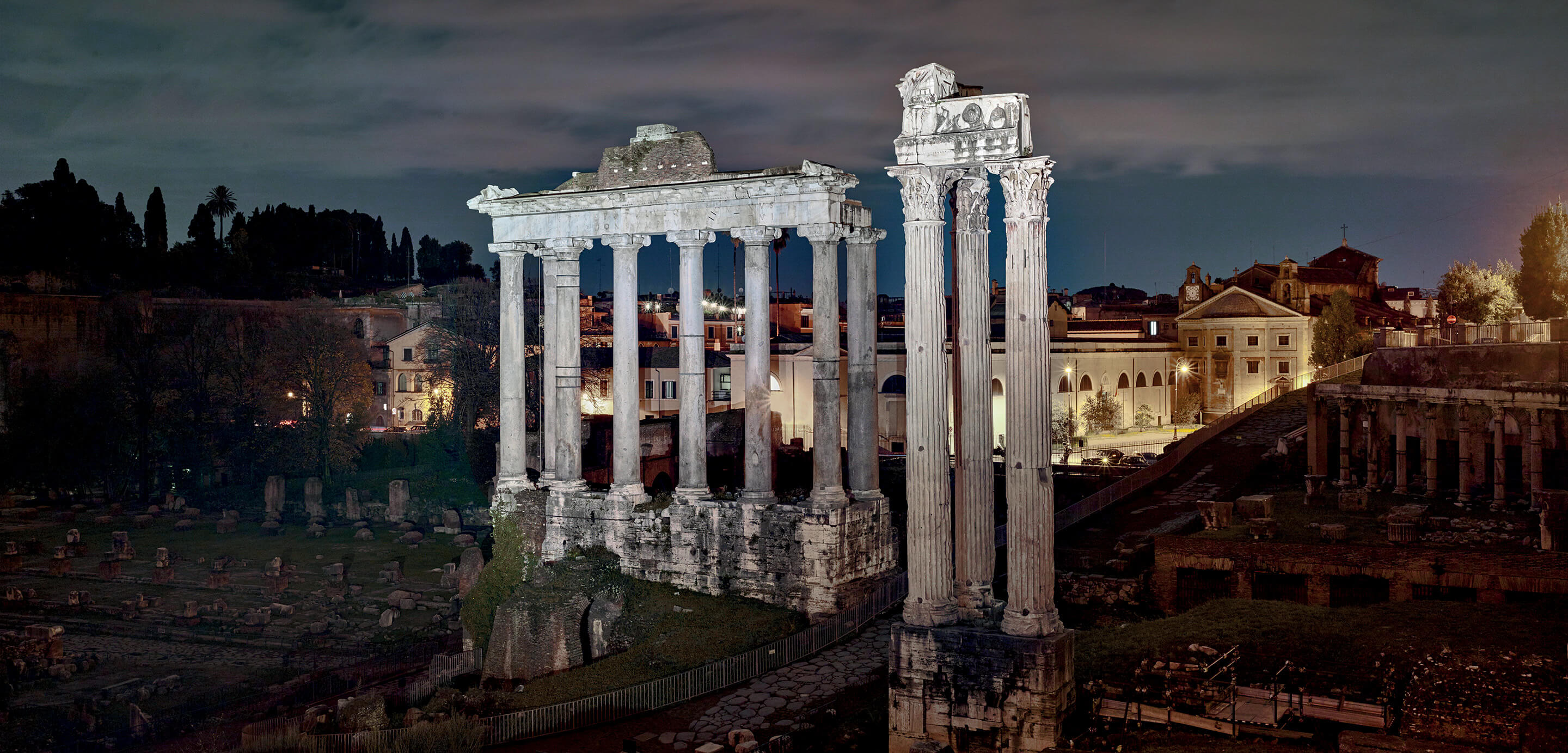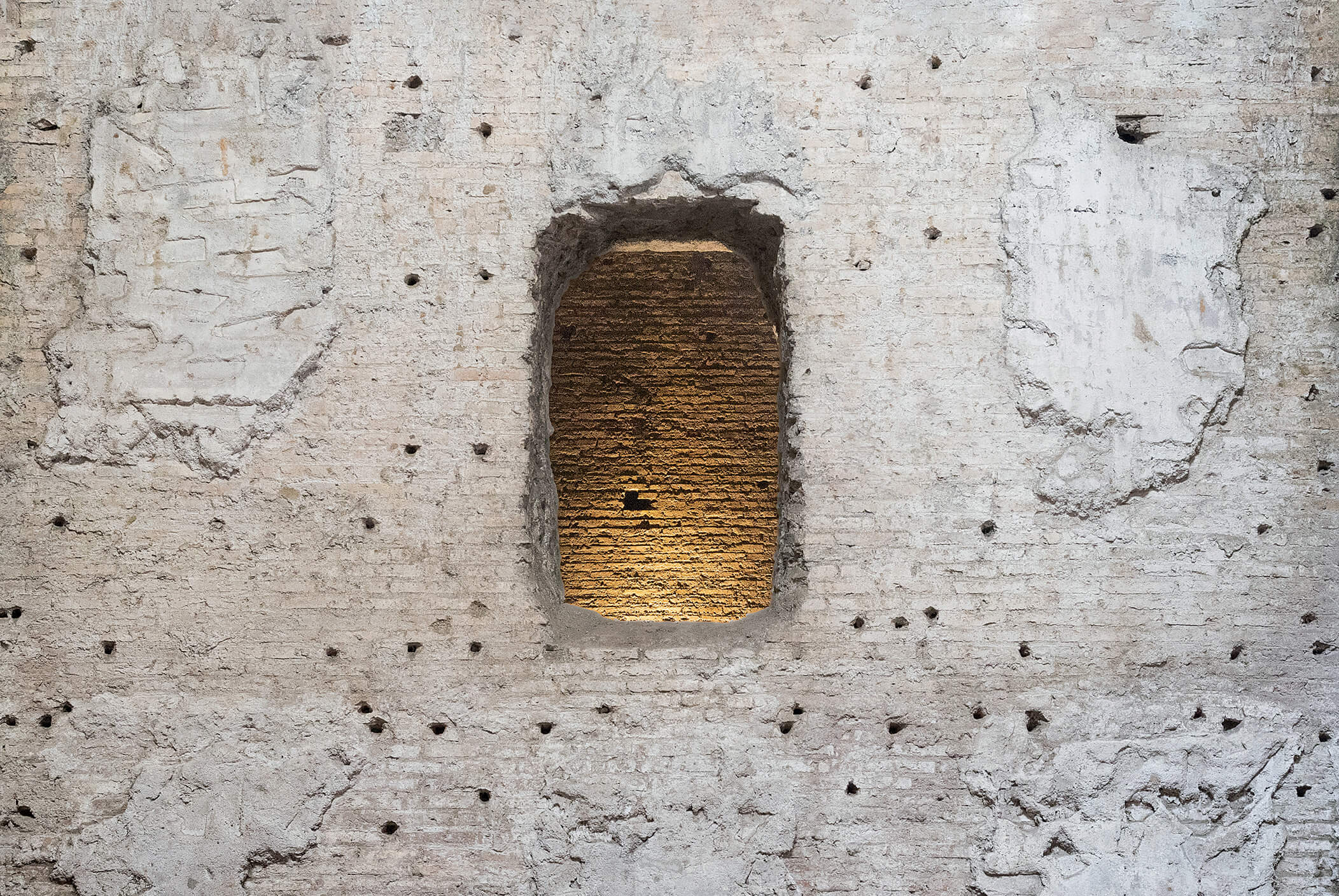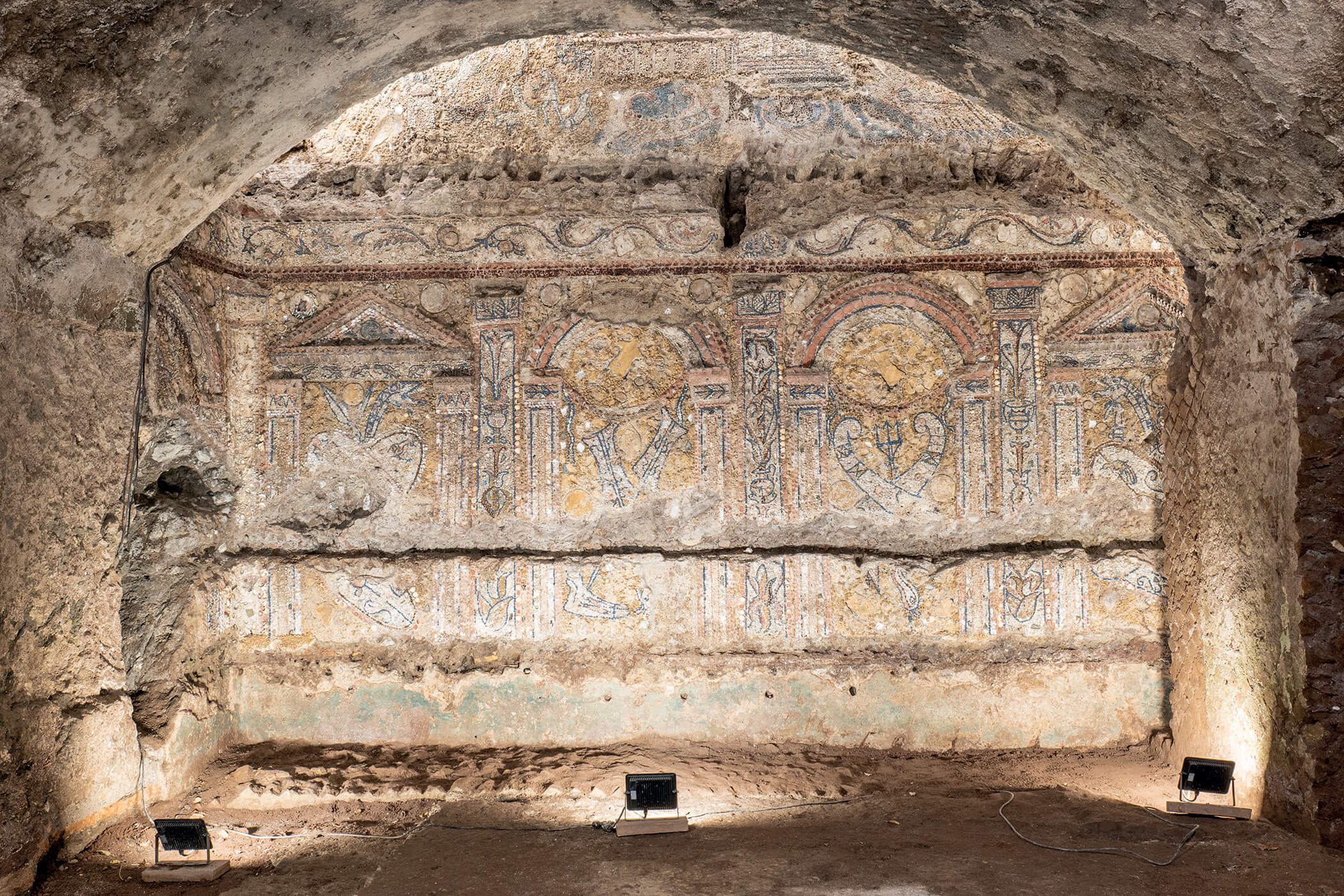
In Rome, every stone is a fragment of the past. Every ancient street you has never truly been left behind. The relationship with the ancient past – for anyone who lives in this layered and powerful city – is an ongoing, daily, inescapable encounter. The ancient walls and consular roads that one crosses every day bring life to a heritage whose constant presence never stops posing questions. A permanence that provokes, that demands to be heard: as if it were an invitation, or perhaps a challenge, to read the present through the lens of the past. It is through this dialogue with time that in-genium was created. Gazes into technology past and future, a photographic and editorial project promoted by the MAIRE Group and its Foundation, in collaboration with the Parco archeologico del Colosseo. A visual and conceptual exploration that spans archaeology, philosophy, art and technology to show how the ingenuity of the ancients continues to speak to the present and can even point to new ways forward. «The technical knowledge of the ancient Romans preceded many aspects of modern industry. Keeping in mind the high-quality work of yesterday's pioneers gives greater meaning to our work today and adds further impetus to our strategy for the future, » stated Fabrizio Di Amato, President of MAIRE and its Foundation, whose words unveiled the significance of in-genium with power and clarity. Not just a photographic publication, but a visual and conceptual journey. An act of collective reflection.
Imagining solutions, transforming reality
This book, published by Silvana Editoriale and available on the publisher's website and in bookstores, takes its name from the Latin term in-genium: the ability to imagine solutions, to influence reality, and to transform it. This knowledge built the Roman Empire and is now evident in energy transition technologies and in contemporary industry, which is questioning its ecological, aesthetic, and social role. The work is centered around six key concepts – design, measure, channel, mix, lift, and re-use – which also serve as keys to understanding the evolution of engineering from antiquity to the present day.
The genius of Nero's design of the Domus Aurea (to design); the measurement of the sacred and the beautiful between the Curia Iulia and the Roman Forum (to measure); the water systems of the Horti Farnesiani, House of the Vestal Virgins, Fontana delle Pelte and Cloaca Massima (to channel); the cement works at the Temple of Venus and Rome and the methods of mixing natural pigments in rustic mosaics (to mix); the system of underground hoists in the Colosseum for lifting the scenery for shows and the vertical construction technique of the drums of the Trajan Column (to lift) ; and finally, the Domus Tiberiana, an example of "circular economy" (to re-use): these are the themes and concepts that give shape to the book.
The photographic section opens with photos by Luca Campigotto (a Venetian photographer known for his evocative night-time images of urban and wild landscapes) and continues with a selection of images taken by three teams of photographers from the Academies of Fine Arts in Rome, Milan Brera, and Catania during an immersive artist retreat. Carmelo Nicosia, a photographer from Catania and lecturer at the Academy of Fine Arts in Catania, in addition to his own photographs, coordinated the work of the photographers who took part in the artist retreat, which also included photographers and lecturers Cosmo Laera and Alessandro Imbriaco.
The volume develops a photographic narrative that weaves together the archaeological landscapes, captured by the photographers, with images of industrial landscapes from the MAIRE Archive, displayed in evocative diptychs where past and pre- sent mirror each other.
«Even the world of industrial production can provide an important key to under- standing our lives, our thinking, and our plans for the future – emphasizes art historian Nunzio Giustozzi – These images capture the sublime quality inherent in technology, a hyper-real beauty that transcends science and, perhaps, verges on the poetic. »
Alongside the powerful photographs, texts written by archaeologists, architects, renovators, and philosophers accompany the reader on a journey that is as visual as it is conceptual. The common thread is the powerful act of designing a project: in pro-jecting oneself forward there is the possibility of a future. Forward, not only in space but also in time, there is the ability to imagine tomorrow. This is underlined by the words of philosopher and semiologist Ilaria Gaspari, which accompany each heading, suggesting that designing is not just calculating, but caring. It means leaving a mark. As she writes: «In designing, inventiveness encounters the joy of making a mark and bears witness to the ability to imagine a future. » It is in this tension that engineering rediscovers its most human dimension: that of a gesture that does not simply build but dreams up the form of what does not yet exist. A knowledge that is also desire, which is expressed in matter but originates in the soul.

Sponsored by MAIRE and its Foundation with the Parco archeologico del Colosseo, this photographic volume recounts the profound continuity between the genius of the ancients and the challenges of sustainable innovation.
Rome, where every stone is a view into the future
«The Parco archeologico del Colosseo is home to monuments that represent enormous traces of human presence in the area. They are the result of the Latin in-genium: the ability with which man has always sought to design solutions by shaping the surrounding environment, » explain the project curators Carlo Nicolais (Director of Institutional Relations, Communication, and Sustainability) and Massimo Dapoto (Group Communication Manager) of MAIRE.
Imagination and vision become tangible thanks to the exhibition hosted during the Christmas holiday season in the Colosseum Archaeological Park: an exhibition that has allowed the public, right among the ruins of imperial Rome, to rediscover the profound meaning of the dialogue between ancient engineering and contemporary sustainability.«This dialogue between past and future not only enriches the knowledge of our heritage but also stimulates reflection on how cultural heritage can inspire solutions for the technological and sustainable challenges of tomorrow, » emphasizes Alfonsina Russo, Director of the Colosseum Archaeological Park. The photographic works, displayed in the very heart of the places they depict, have become lenses and mirrors: tools to take a closer look at the ties between technical culture, creative ingenuity, and ecological vision. The entire story is told in a podcast produced by Chora Media and narrated by Jacopo Veneziani, art historian and presenter, who accompanies listeners through words, sounds, and suggestions.
Training and engaging the humanist engineers of the future
One of the most significant aspects of in-genium is the direct involvement of young people. An entire generation is called upon to examine the legacy of ingenuity and restore its vision. « I am particularly pleased with the contribution of the photographers from the Italian Academies of Fine Arts, – said Fabrizio Di Amato – an opportunity for young talent to meet the challenge of representing yesterday's, today's, and tomorrow's engineering in the service of the energy transition. I am convinced that this initiative will be an inspiration to the humanist engineers of the future that we are helping to train, and whom we truly need. »
A fruitful alliance between experience and possibility, in which industry becomes teacher and art becomes active thought. This is also the deeper meaning of the project: to cultivate imagination and responsibility through tools capable of inspiring and educating.
With the involvement of the younger generations, in-genium reinterprets Roman remains as tangible manifestations of technical knowledge that is, first and foremost, a form of imagination. From the Domus Aurea to the Cloaca Massima, from the Colosseum's elevators to the Domus Tiberiana, every ancient structure is interpreted as a human gesture that attempted to bring order to the world and make it habitable. Today, faced with an environment that is no longer hostile but fragile, chemical and industrial engineering is called upon to perform a new task: no longer to dominate nature, but to rebalance it, find new sustainable forms of production, and reuse re-sources and materials in a circular vision.
An aesthetic of responsibility
in-genium also represents an invitation to think of industry as a space for culture. The project itself is an example of how a company can promote aesthetic reflection, artistic experimentation, and spiritual research. Not only economic and social capital, but also symbolic and cultural capital.
We need new artist retreats, new courageous experiments that help us imagine what does not yet exist. Ideas that allow us to dream again, as in Adriano Olivetti's vision: «We dream of a free community where man's dwelling is not in conflict with either nature or beauty. » It is in this vision that the profound meaning of in-genium lies: not a sim-ple homage to the past, but an act of poetic design, aimed at a more harmonious, more conscious, more human tomorrow.

Questioning the past to build the future
In-genium finds its narrative and symbolic power in the encounter between past and future. The images of the present do not overshadow those of the past but rather question them. Ruins are not just remnants of the past but still have lessons to teach. The artistic gesture does not merely document, but revives, reinterprets, and designs.
In a world that is reflecting on its direction, in-genium reminds us that all authentic progress starts with an age-old question: how do we want to live in our time? It does so through the language of beauty, the ethics of design, and a forward-looking vision. Because perhaps that is precisely what design is: projecting hope forward, in concrete form, one stone at a time.
in-genium. GAZES INTO TECHNOLOGY PAST AND FUTURE